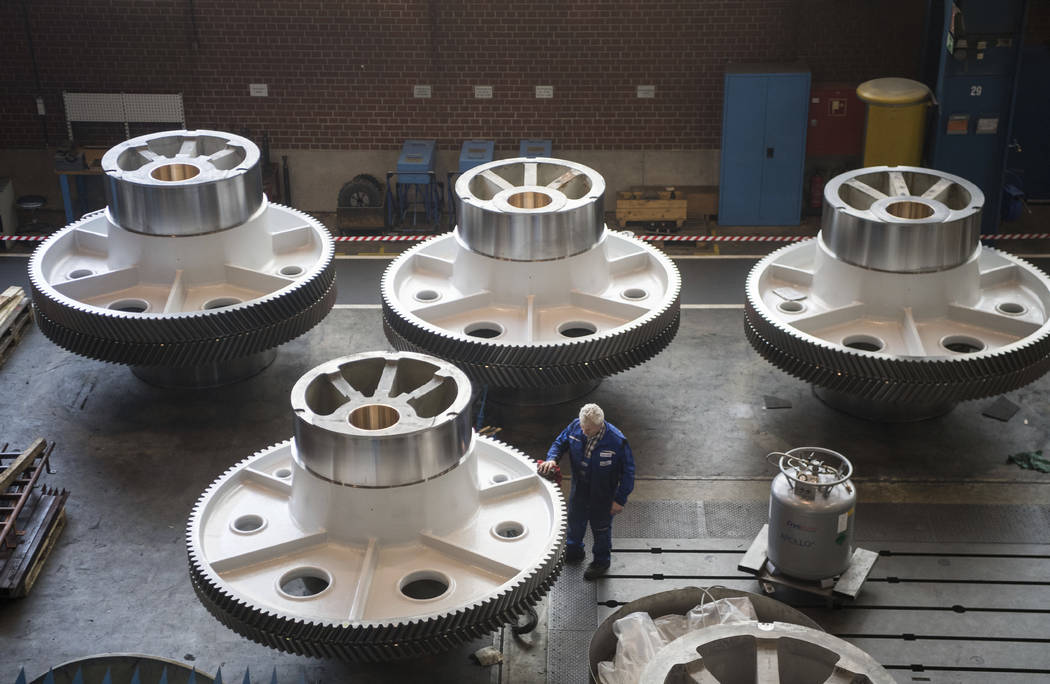European Central Bank unveils stimulus for uncertain economy
FRANKFURT, Germany — The European Central Bank on Thursday delivered a new blast of monetary stimulus to help the economy in the face of uncertainties like the U.S.-China trade conflict and Brexit.
The central bank for the 19 countries that use the euro cut the rate on deposits it takes from banks to minus 0.5% from minus 0.4%. That is a penalty rate that pushes banks to lend excess cash.
It also said it would restart its bond-buying stimulus program, which pumps newly created money into the financial system to lower borrowing costs and help the economy. It will buy 20 billion euros ($22 billion) a month in government and corporate bonds for as long as needed.
The central bank furthermore extended its promise to keep rates at record lows until inflation has “robustly” converged on its goal of just under 2%.
Making credit cheaper
The ECB has joined the U.S. Federal Reserve and other central banks around the world in lowering rates and make credit cheaper in an effort to help the economy in the face of slowing global trade and other uncertainties.
The Fed cut its key policy rate in July for the first time in a decade, to a new range of 2% to 2.25%. Markets believe there is a near certainty the Fed will cut rates for a second time at its next meeting Sept. 17-18.
ECB President Mario Draghi was able to push the stimulus package through the 25-member governing council despite skepticism about the size of the package voiced by several members ahead of time. It was his next-to-last meeting before his eight-year term ends on Oct. 31; European governments have nominated Christine Lagarde, the outgoing head of the International Monetary Fund, as his successor.
Economic growth in the eurozone has slowed to 0.2% in the second quarter from the quarter before and Germany, the largest member of the euro, shrank by 0.1%, putting it on the verge of a recession, defined as two straight quarters of declining output.
Uncertain global trade
While services firms and employment have held up relatively well, industrial firms have seen activity slump amid uncertainty about global trade. U.S. President Donald Trump has imposed higher tariffs on Chinese imports as he seeks a new trade deal, leading to Chinese retaliation and uncertainty among firms about where they should locate supply lines of parts and products. The IMF has lowered its forecast for growth in global trade this year by 0.9% to 2.5%.
Further uncertainty has been piled on by lack of clarity over whether Britain will leave the European Union on Oct. 31 with a divorce deal to smooth the movement of goods. Without an exit deal, new tariffs and border checks would suddenly be imposed, disrupting business dealings between major trade partners.
Stimulus measures make borrowing cheaper and thus stimulate economic activity, assuming businesses see enough prospect of profit to be willing to risk borrowing. Low interest rate policy also tends to support the prices of financial assets such as stocks and bonds, helping to ward off market turmoil that could further undermine confidence.
“On both sides of the Atlantic, highly accommodative monetary policies limit the risk of financial turbulence,” said Holger Schmieding, chief economist at Berenberg bank in London.
Like the Fed, the ECB has had to change its stimulus stance as the global economic outlook has grown shakier. The bank ended a previous bond purchase stimulus only in December after purchasing 2.6 trillion euros ($2.9 trillion) in financial assets from banks. The bank kept those bond holdings by reinvesting the proceeds of expiring bonds, thus maintaining the level of monetary stimulus. But deteriorating economic data pushed the bank to start developing plans for more stimulus.

















